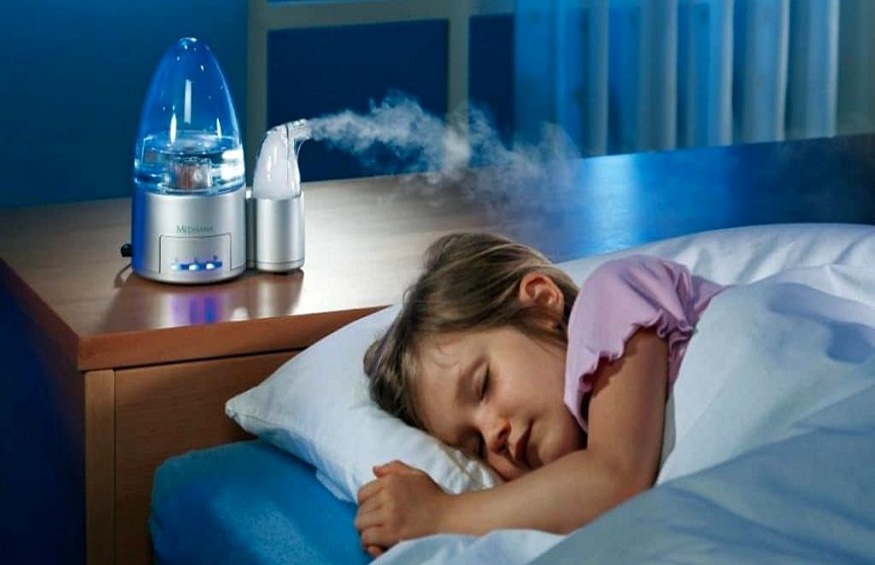Low humidity is one factor that makes winter difficult for people, even when they are inside a beautiful heated environment. To feel comfortable, people require a particular degree of humidity. Indoor humidity may be quite low in the winter, and this lack of moisture can dry out your skin and mucous membranes. Low humidity also gives the impression that the air is cooler than it is. Dry air can also help to dry out the wood in our homes’ walls and flooring. As the dried wood shrinks, it can create floor creaks and drywall and plaster fractures.
Humidity Relative
The air’s relative humidity has an impact on how comfortable we are. But what exactly is humidity, and what is “relative humidity”?
The amount of moisture in the air is known as humidity. You are in a region of high humidity if you are standing in the bathroom after a hot shower and can see the steam hanging in the air, or if you are outside after a hard rain. You’re experiencing low humidity if you’re standing in the midst of a desert that hasn’t seen rain in two months or if you’re breathing air from a SCUBA tank.
There is a certain quantity of water vapour in the air. The quantity of water vapour that any given mass of air can hold is proportional to its temperature: the warmer the air, the more water it can hold. A low relative humidity indicates that the air is dry and, at given temperature, could retain a lot more moisture.
The relative humidity has a significant impact on our level of comfort. Water will not evaporate if the relative humidity is 100 percent since the air is already saturated with moisture. Our bodies cool themselves by evaporating moisture from our skin. The simpler it is for moisture to escape from our skin and the colder we feel, the lower the relative humidity.
You may be familiar with the term “heat index.” In varying relative-humidity levels, the chart below shows how hot a given temperature will feel to us.
We feel considerably hotter than the actual temperature when the relative humidity is 100 percent because our perspiration does not evaporate. We feel colder than the actual temperature when the relative humidity is low because our perspiration evaporates quickly; we might also feel excessively dry.
Humans are affected by low humidity in at least three ways:
It causes your skin and mucous membranes to dry out. When you get up in the morning, you’ll notice chapped lips, dry and itchy skin, and a dry painful throat if your home has low humidity. (Low humidity causes plants and furnishings to dry out.)
It causes static electricity to build up, and most people detest being ignited every time they come into contact with something metallic.
It gives the impression that it is colder than it is. High humidity makes it appear warmer than it is in the summer because perspiration cannot escape from your body. Low humidity has the opposite impact in the winter. If you look at the chart above, you’ll see that if the temperature inside your home is 70 degrees F (21 degrees C) and the humidity is 10%, it feels like it’s 65 degrees F outside (18 degrees C). You can make your house feel 5 degrees F (3 degrees C) warmer just by increasing the humidity to 70%.
A humidifier may save you a lot of money since humidifying the air is far less expensive than heating it!
A relative humidity of around 45 percent is excellent for indoor comfort and health. This humidity level makes the air feel about the same as the temperature indicates at interior temperatures, and your skin and lungs do not dry out and get irritated.
Most structures are unable to sustain this degree of humidity without assistance. Relative humidity is typically significantly lower than 45 percent in the winter, and it can be much higher in the summer. Let’s have a look at why this is the case.
Temperature and Humidity
Here’s what occurs in the winter to make our homes seem so dry. Let’s assume the temperature outside is 0 degrees Celsius, or 32 degrees Fahrenheit. At this temperature, a cubic metre of air can carry no more than 5 grammes of water. You now bring this cubic metre of air inside and heat it to a temperature of 25 degrees Celsius (77 degrees Fahrenheit). Only 23% relative humidity is present:
As the temperature outside drops, it gets worse. This is why the air inside any heated structure seems so dry in the winter. Unless you do something to boost the humidity, when the temperature outside is below freezing, the relative humidity inside will be below 20%.
The relative humidity of the outside air may be pleasant, but when that air is heated, the relative humidity lowers, leaving the air within the home extremely dry.
A humidifier can assist maintain a suitable level of humidity throughout the dry months. Let’s look at a straightforward humidifier.
Humidifier Inside
Evaporative humidifiers are the most popular form of humidifier. This sort of humidifier is actually fairly basic and self-regulating for the most part. Cold water is stored in a reservoir and dispensed into a basin. The water from the basin is absorbed by a wicking filter. After that, air is blown through the moistened filter by a fan.
Some of the water in the filter evaporates when the air travels past it. The harder it is to evaporate water from the filter at greater relative humidity, which is why a humidifier is self-regulating: as humidity rises, the humidifier’s water-vapor output automatically reduces.
A house or building’s heating and cooling system may be connected to an evaporative humidifier. A metal mesh or screen is positioned in the duct coming from the furnace and/or air conditioner; water from the building’s pipes runs down the screen; and air blowing over the screen takes up moisture.
The low energy costs of impeller and ultrasonic systems present two problems. First, if the water becomes stagnant, these designs will spray the stagnant water into your house, along with any bacteria it may contain. This is why it’s critical to clean the tank on a regular basis and to replenish it with clean water when it hasn’t been used. As a result, antibacterial characteristics are integrated into many high-end ultrasonic devices. To destroy germs, some units, for example, utilise UV light.
The second point of worry is the presence of minerals in the water. These minerals are dispersed into the air using impeller and ultrasonic designs. Minerals in your water will show up as dust if there are a lot of them in your region. The Environmental Protection Agency (EPA) does not issue health warnings regarding minerals in the air, but it does advocate using low-mineral water in your humidifier (such as distilled water). A demineralization cartridge is included in many ultrasonic versions to filter minerals out of the water and avoid dust.
Some humidifiers keep track of the relative humidity in the air and switch on and off as needed to keep it at a specified level.
Humidifiers can be placed as tiny portable room units or incorporated into your furnace to manage humidity across the entire house.
An cheap hygrometer will display you the relative humidity in your home if you’re interested in keeping track of it.
For more information, visit: https://smzsite.com/

